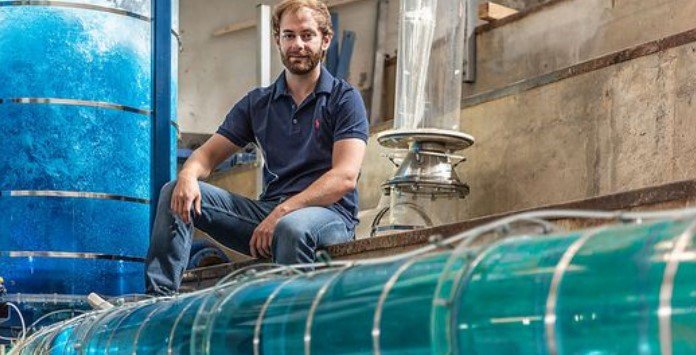TECH
 Austrian engineer develops system that uses water to store energy
Austrian engineer develops system that uses water to store energy
The importance of developing new technologies for energy generation and capture is enormous because not only because of the depletion of non-renewable sources but also because of the need to clean up the energy matrix to combat global warming, in renewable energies.
The more diversity in equipment options for capture and conversion, as well as different sources of renewable energy, the greater will be the human being's ability to no longer need fossil fuels.
Many inventors, engineers and scientists have dedicated their lives to finding ever better solutions to the problem of global warming, not only for a desire for professional achievement, but to make their contribution to enable the next generations to enjoy this incredible world in which we live.
Aiming at this, an Austrian engineer has developed an innovative system that uses water as a storage medium for thermal and electrical energy.
This is something incredible and can be a revolution in the field of renewable energy generation. Still, according to Franz, this new technology will allow the development of renewable energy generation and conversion plants in the short term without one of the great limitations of wind and solar energy, for example, the discontinuity, ie the inability of these wind and solar power plants to produce full-time energy. How Energy Storage Works
The idea, as well as most of the great ideas, is quite simple, focusing on the great advantages of pumped type storage technology and heat storage using pure water as a way to create a reversible hydroelectric power station for hot water storage. Through this, the system is able to provide both heat, electricity and even cooling. First step, reversible plant
The first basic element of the system is the hydroelectricity of pumped storage, an already existing technology in countries with large mountain ranges. This is a key ingredient for the system to work because it needs a large elevation of one of two different reservoirs relative to sea level. Another essential element is a large amount of water. When there is surplus energy produced, this surplus is used to pump water from the lowest reservoir to the highest. When more energy is needed, the water from the higher reservoir is poured into the turbines and the energy is generated. Second step
From then on it was important for Franz to try to develop this in a way less dependent on the topography, which would limit its use in mountainous areas. For this Franz deployed the process in a totally underground structure.
This is possible by creating uneven tunnels to reproduce the height difference between the reservoirs to achieve the gravitational effect. This approach solves a number of problems, not just topography, but also the size of the area to approve the implementation of the project by the authorities. Third step
The next step for the new storage system are heat accumulators, to store the thermal energy. Since water has high specific heat, which is the ability to accumulate heat without evaporating, it is an excellent means of heat storage.
Hydroelectric power is used to heat water up to 90 °, and this thermal energy is stored and used by means of heat exchange systems installed in the underground reservoirs. When there is demand for heat, through an urban heating system this heat reaches consumers. Last step
Finally the puzzle is finished with a cooling system technology. On hot days, hot water drives coolers, which provide cooling energy, which can also be distributed to consumers by piping.
To enable a constant supply of cooling energy to various zones of different temperatures, the system can be implemented by cooling the water from the tunnels of the reversible hydroelectric plant, which could therefore be labeled as "reversible hydroelectric power station for cold water storage ". Result of the energy storage system of Franz Georg Pikl
This system can result in an 80% efficiency in storing heat and electricity, generating much better storage than could be achieved with such systems being deployed separately without increasing consumption. Renewable Energy Magazine

No comments:
Post a Comment